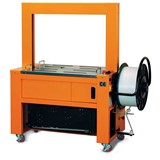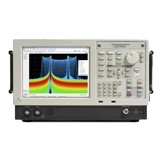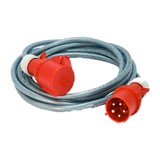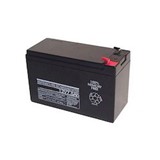By Jeanne Erdmann- Standards Australia Limited
In fact, time is counting down towards 1 July 2006 when the European Union requires that new electronics and electronic equipment placed on the market contain no lead, mercury, cadmium, hexavalent chromium, polybrominated biphenyls or polybrominated diphenyl ethers. The EU restriction on hazardous substances (RoHS) impacts global trade as manufacturers outside the EU will need to make products without the six regulated substances to import those products to EU members. Other countries are following the EU. Japan is voluntarily producing electronics without lead.
According to an Electronic Industries Alliance Special Report dated April 16, 2003, the Ministry of Information Industry in China is drafting a proposal to ban chemical substances from electronic products. In the United States in September 2003, California passed legislation to eliminate and recycle stockpiles of electronic waste. The bill also requires the State Department of Toxic Substances to adopt regulations prohibiting the sale of electronic devices if those devices are banned by the European Union.
Of the six regulated substances in the EU Directive, lead is used in the highest amount. Going lead-free means abandoning tin/lead solders, which for decades have provided reliable junctions for circuit card assemblies and connectors. Complying with directives such as the EU RoHS means reliable and consistent tests are needed to determine levels of lead and other regulated substances. Recently, the IEC has taken steps to ensure that as of 2006, Standards involving soldering would take into account the EU RoHS directive.
At present there are some 5300 publications available from the IEC. According to one estimate, up to one-third may require revision while new standards will also be required. All in all, a big task. For example, one IEC technical committee is working on 43 Standards that are either under revision or proposed for new work. In addition, the IEC has just created Technical Committee 111 to handle environmental standardisation for electrical and electronic products.
An International standard to test for lead would support trade and minimise risks for manufacturers if standards can produce results that are accepted globally. Then retesting in every market would be unnecessary. These days, every lab measures for lead differently, said Markus Stutz, Motorola Advanced Technology Centre, Europe, which could produce very different results, depending on the method, type of equipment used, and sample preparation.
“That has a major impact on the margin of error,” said Stutz. He recently led an ad hoc working group of the IEC’s Advisory Group on Environmental Aspects to help standardise test methods and help provide companies with information on how to minimise risk so they don’t sell products containing regulated substances into European market.
According to Standards Australia’s Director of Electrotechnology, Warren Miller, Australia would adopt an International standard to test for lead as an Australian Standard.
Technical costs to lead-free
For now, those risks won’t be easily minimised because the EU has yet to define ‘lead-free’ solder. “There are rumours of a 0.1 percent limit but that’s artificial because the EU has not decided how that percentage will be calculated,” said Kimmo Saarinen, Chairman of the IEC’s Advisory Committee on Electronics and Telecommunication. That amount could mean 0.1 percent of the total lead content of individual components or 0.1 percent of the completed device.
Either way, replacing lead has been difficult. Tin-bismuth alloys have already been tried but bismuth has no future as a solder because it may be as toxic as lead, said Saarinen. Tin-zinc or tin-zinc-aluminium alloys are also being tested, as are methods like conductive gluing and laser welding. Saarinen noted that many of the proposed replacement solders are patented and may not be available cost-free for IEC test purposes.
So far, the most common substitute for lead is pure tin or a tin-silver-copper alloy. But these replacement alloys have a melting point that is 30°C or so higher than the processing temperatures used for more than 20 years. “And now somebody comes along and says ‘we want it all increased’,” said Chris Hunt of the National Physics Laboratory in Middlesex, UK. “That’s not a trivial thing to achieve or accomplish overnight.”
Higher melting and processing temperatures of replacement alloys can translate into problems. In some industrial applications, explains Kimmo Saarinen, big and small components exist on the same board, but both components may not be able to survive the extra heat. Also, the reliability of solder joints may be compromised as tin-silver-copper alloys have much more complex metallurgy than tin-lead alloy.
“There are always also other metals involved in the electrodes of components or printed board coatings, so that six-element metallurgy is very possible, and many unwanted alloys may be formed,” he said.
Unwanted alloys are not the only unwanted formations. Pure tin and some other alloys tend to grow hair-like whiskers, which are conductive and can short out nearby electronic junctions. Although whisker formation is not completely understood, the phenomenon can occur when pure tin is not correctly prepared or when the board is stressed, said Mr Saarinen. For instance in flexible mobile phones that open and close like a clam, the stress of bending triggers tin whiskers, sometimes up to 1mm or longer. Even 0.1 mm can be problematic.
The best solution?
Until now, whisker growth was prevented with the addition of small amounts of lead to the solder. Since soldering accounts for 0.5 percent of lead use worldwide, Mr Saarinen questions whether lead-free will prove wise over the long run.
“Higher heat, and use of protective gases during soldering mean clearly higher energy consumption than in conventional processes, which according to some studies means that new methods are less environmentally friendly than old ones.
“Plus, recycling of small quantities of silver and copper is more difficult than that of lead.”
It is not all bad news says the UK’s Chris Hunt. Although some lead-free circuit boards may be less reliable, some may be more reliable once scientists understand and manage the properties of the new alloys, and understand the implications of those properties on product lifetime. Replacing lead in soldering is technically possible, said Hunt, but cost penalties will be incurred, and who will absorb the costs of increased production? Another grey area, he said, is the issue of reliability over the long run. For instance people don’t look to mobile phones as a product that needs to last a long time but the airline industry certainly looks for longevity in avionics equipment.
“That makes life interesting for the scientist and technologist but a bit more problematic for the businessman,” Hunt said.
Launch of worldwide lead-free certification for electronics
With legislation in the US on hazardous substances, including lead, in electronics already in place, and similar laws set to take effect in China and Europe shortly, how can electrical and electronic manufacturers be sure that their products meet the new limits being set?
A new specification adopted by IECQ – the IEC’s Quality Assessment System for Electronic Components – specifies the technical requirements that manufacturers must meet to ensure that their products conform to the new limits. As a result, IECQ is now able to offer a global certification solution for the world’s electronics industry to prove compliance with the new environmental regulations regarding lead and other hazardous substances.
The “Hazardous Substance Free” or “HSF” Specification was developed by the Electronic Component Certification Board (ECCB – the IECQ’s US member), and ECA (the Electronic Component Sector of the Electronic Industries Alliance (EIA). The specification is entitled Electrical and Electronic Components and Products Hazardous Substance Free Standard and Requirements and has the reference EIA/ECCB-954.
HSF Certification to the EIA/ECCB-954 standard does not take the form of subjecting the electronics industry to thousands of new tests, but rather offers a systems’ approach that will give companies the means to prove compliance with the new legislation.
In Europe, the RoHS Directive will oblige European Union member states and those countries exporting goods to the EU, to produce electrical and electronic equipment (including components) that do not contain the following “hazardous” materials: lead, mercury, cadmium, hexavalent chromium, polybrominated biphenyls (PBB) or polybrominated diphenyl ethers (PBDE). In the US, California has enacted the Electronic Waste Recycling Act of 2003. To reward and reinforce companies’ compliance with the new Act’s requirements, the State has also created the Governor’s Environmental & Economic Leadership Awards. A network of State agencies was instituted to manage the deployment of and compliance to the Act’s requirements. In China, the Ministry of Information Industry is drafting a proposal to ban certain chemical substances from electronic products.














